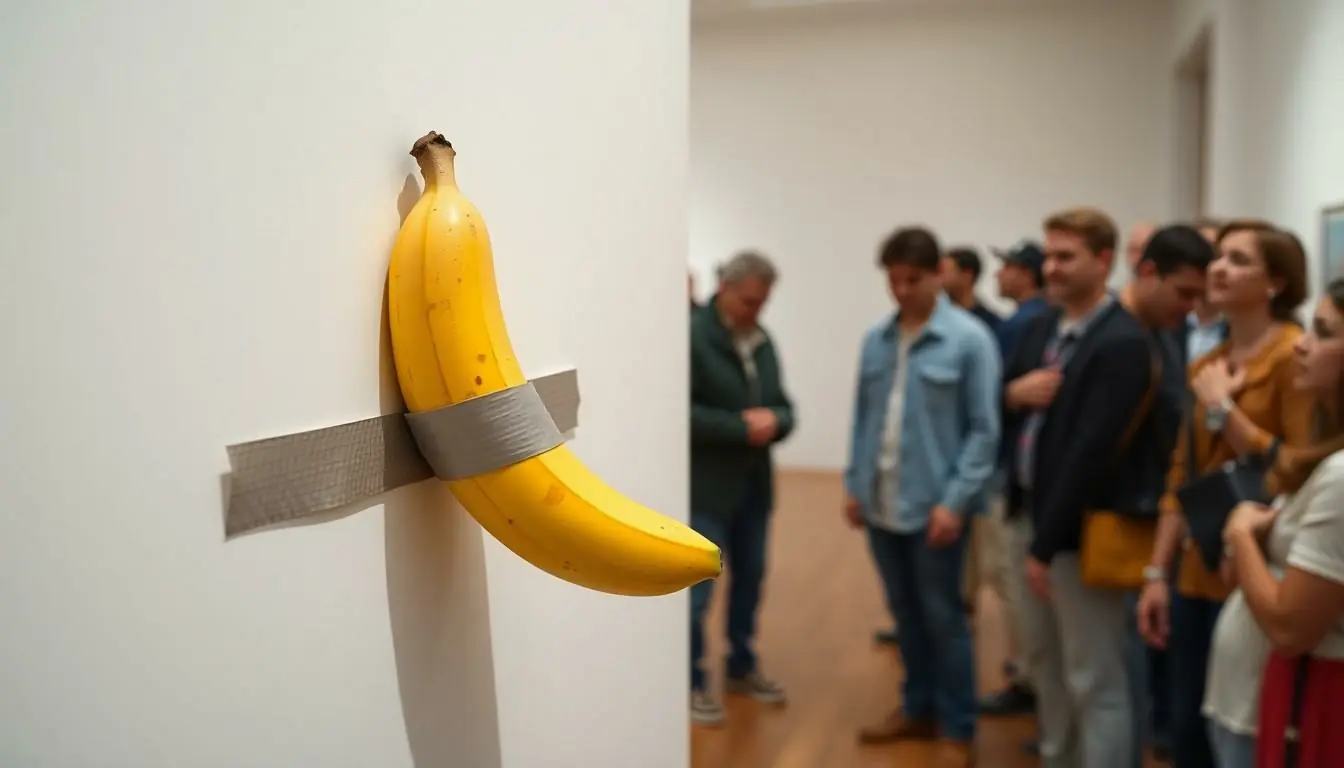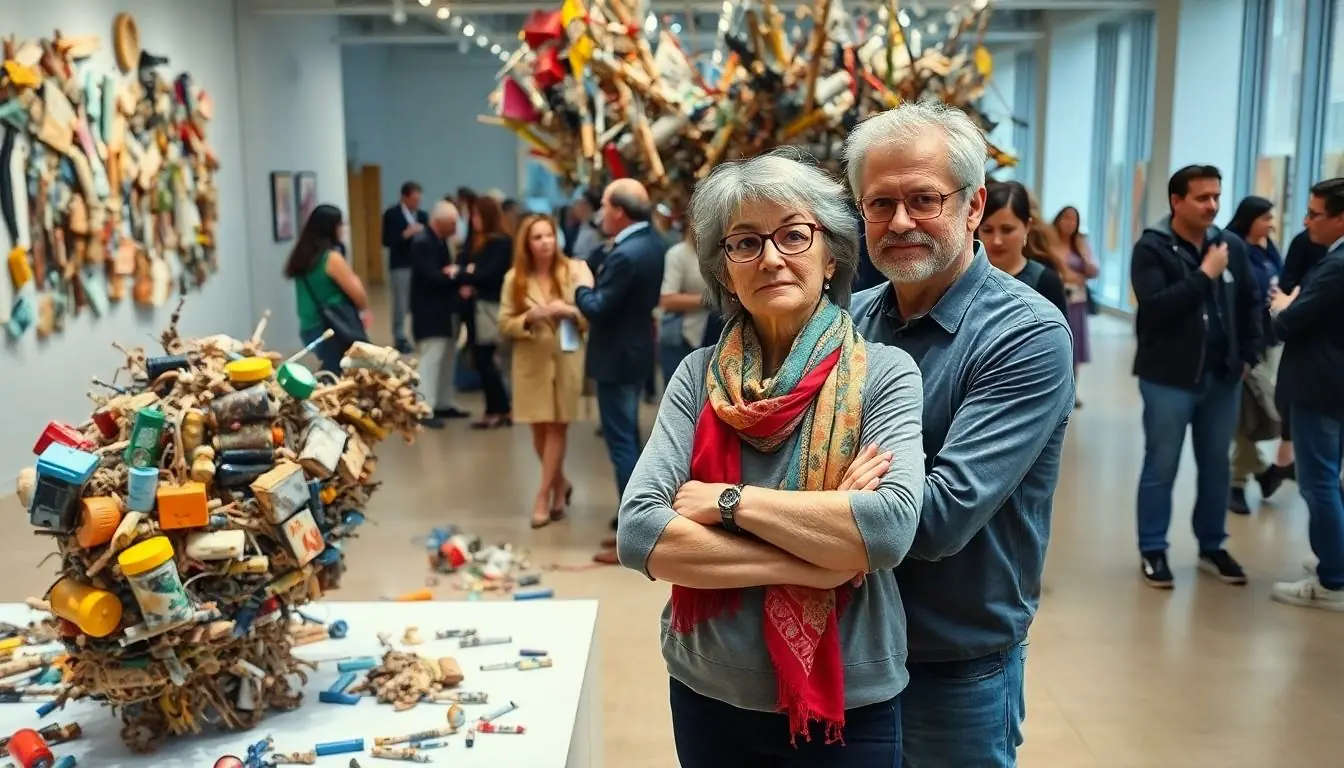Table of Contents
ToggleModern art can be a wild ride, often leaving viewers scratching their heads or stifling a laugh. From splashes of paint on canvas to bizarre installations, some pieces have left audiences wondering if they’ve stumbled into a cosmic joke. What’s behind this curious phenomenon? Is it genius or just plain nonsense?
Overview Of Worst Modern Art
Modern art often evokes strong reactions, including disdain for certain pieces considered the worst. Critics frequently label works as uninspired or confusing, sparking debates about artistic merit and intention. Many pieces prioritize shock value over craftsmanship, leaving viewers questioning their significance.
Artists promote avant-garde concepts, yet some creations defy conventional standards altogether. Examples include lauded installations that consist of common objects—audiences sometimes perceive them as pretentious rather than innovative. Gallery visitors often feel frustrated when confronted with pieces devoid of traditional artistic elements.
Certain renowned artworks fall flat due to their ambiguity. Famous pieces, such as a blank canvas, invite scrutiny for their perceived lack of effort. Creating these artworks raises questions about the boundary between genius and absurdity.
The discourse surrounding modern art continues to expand. As criticism intensifies, viewers might question the value of art forms that seem devoid of creativity. The complicated relationship between artist, artwork, and audience plays a critical role in these evaluations.
Art manifests in numerous styles, but some remain polarizing. Certain artists intentionally provoke reactions, aware of the mixed opinions their work generates. This dynamic ensures that the conversation about the worst modern art persists, reflecting broader cultural sentiments and artistic trends.
Notable Examples

Some modern art pieces have sparked intense debate over their artistic value, often earning the title of “worst.” Below are notable examples that illustrate the divide in public opinion.
The Comedian by Maurizio Cattelan
Maurizio Cattelan’s “The Comedian” features a banana duct taped to a wall. Critics argue this piece represents absurdity rather than artistry, focusing on shock value. Sold for $120,000, it raised eyebrows and eyebrows over the worth of such a simple concept. Many perceive it as a commentary on the art market’s irrationality, leaving viewers questioning the necessity of creativity in contemporary works.
The Fountain by Marcel Duchamp
Marcel Duchamp’s “The Fountain” redefines art through its use of a urinal. Created in 1917, this work challenged conventional ideas, prompting discussions about what constitutes art. Some viewers see it as profound, while others view it as an uninspired gesture. The decision to present a found object in a gallery setting emphasizes the role of context over craftsmanship, triggering conversations about artistic intent.
The Physical Impossibility of Death in the Mind of Someone Living by Damien Hirst
Damien Hirst’s “The Physical Impossibility of Death in the Mind of Someone Living” showcases a preserved shark in a tank. Many criticize this piece for prioritizing spectacle over substance, questioning its emotional impact. With a price tag of $8 million, some regard it as an emblem of modern art’s elitism. The visual shock is undeniable, but its significance remains heavily debated among art enthusiasts.
Criticism And Commentary
Criticism of modern art generates significant discourse, particularly around its more contentious examples.
Public Reactions
Public reactions to modern art pieces often vary widely. Some viewers express frustration, labeling certain works as meaningless or pretentious. Others find humor in the absurdity, viewing controversial pieces as a challenge to traditional norms. Social media amplifies these sentiments, with viral debates highlighting differing perspectives on pieces like Maurizio Cattelan’s banana. Many argue that such artworks prioritize shock value over technical skill, igniting discussions about artistic intent. This dynamic fosters an ongoing conversation about what constitutes art, demonstrating the complex relationship between perception and value.
Expert Analysis
Expert analysis regarding modern art critiques its balance of creativity and intentionality. Some art critics emphasize that most controversial pieces communicate broader societal issues, not just aesthetic values. For instance, scholars often explore how Duchamp’s urinal questions the very nature of art and its significance. Critics assert that those dismissing modern art may overlook deeper meanings and the commentary embedded in these works. Art historians frequently argue that interpreting these pieces can reveal insights into cultural trends and artistic evolution. These evaluations contribute to understanding the intricate fabric of modern artistic expression.
Cultural Impact
Modern art’s influence resonates deeply within contemporary artistic expression. Artists often push boundaries, adopting unconventional techniques and mediums. Unique forms, like installations and performances, challenge traditional notions of art. Many see this resurgence in avant-garde ideas as a response to modernity, prompting discussions about artistic value.
Society plays a crucial role in shaping and interpreting these works. Art reflects cultural sentiments, often addressing political, social, and economic issues. It engages audiences in conversations about identity, morality, and existential themes. Some artworks provoke strong emotional reactions, awakening deeper societal reflections. Viewers frequently find connections between artistic intent and their lived experiences, reinforcing the art’s relevance and impact.
The discourse surrounding modern art remains as vibrant as the pieces themselves. While some may label certain works as the worst, these controversies spark essential conversations about creativity and intent. The divide between appreciation and disdain often reveals deeper societal reflections that challenge conventional norms.
As artists continue to push boundaries, the artistic landscape evolves, inviting viewers to engage with complex themes. This ongoing dialogue not only shapes perceptions of modern art but also highlights its cultural significance. Ultimately, the exploration of what constitutes art encourages a richer understanding of both the works and the world they inhabit.






